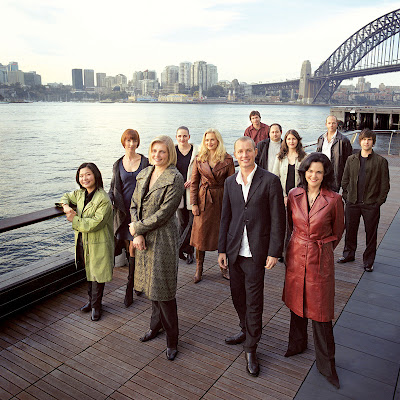Australian Chamber Orchestra, Part 1
 Australian Chamber Orchestra, photo by Stephen Oxenbury |
The program opened with Baroque music, which has been to my ears where the ACO has enjoyed the greatest success in recording. They gave a little-heard Handel concerto grosso (op. 6, no. 7, B-flat major -- p. 95 in this online score) a stylish, precise, carefully considered performance. After a plush Largo introduction, the group rendered the repeated-note opening theme of the Allegro -- so simple that it could be a Suzuki exercise -- in such a crisp, unified way that it helped point and articulate the entire movement. Harpsichordist Erin Helyard (on the tour only to play this piece) and the group's director and lead violinist, Richard Tognetti, provided (presumably) improvised cadenzas to smooth some of the harmonic transitions between movements. The ACO sound is nice in that the first violins are not always (and not even often) the most dominant sound in the texture, which allows more of the inner voices and bass to be heard. The continuo realization, here provided by harpsichord alone, was adequate and stylishly done, but a little subdued in volume. There were moments where other groups would have allowed the harpsichord figuration a little more presence.
| ACO: Bach, Keyboard Concerti 1, A. Hewitt Bach, Keyboard Concerti 2, A. Hewitt Vivaldi, Flute Concerti, E. Pahud |
Anne Midgette, A Rough-and-Ready Ensemble (Washington Post, October 1) |
The Australian Chamber Orchestra returns to the Terrace Theater this evening for a second, completely different program (September 30, 7:30 pm), with oud player Joseph Tawadros and percussionist James Tawadros. An arrangement of Shostakovich's seventh string quartet is matched with arrangements of Sephardic and Egyptian music.





















































No comments:
Post a Comment